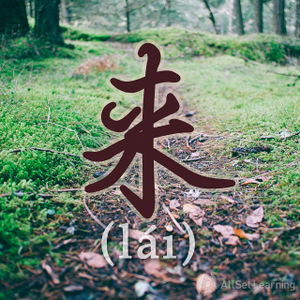Difference between revisions of "Advanced uses of direction complement "-qilai""
| Line 25: | Line 25: | ||
起来 can also be used to show that an action or state has started and is ongoing: | 起来 can also be used to show that an action or state has started and is ongoing: | ||
| + | |||
| + | ===Examples=== | ||
<div class="liju"> | <div class="liju"> | ||
Revision as of 06:03, 18 October 2012
-
Level
-
Similar to
-
Used for
-
Keywords
We saw in B1 that 起来 (qǐlái), among other things, can be used to express a literal upward movement. 起来 also has some more slightly less intuitive usages, listed below.
Contents
Expressing bringing things together
Structure
起来 can be used to express collecting things together, where in English we might say "tidy up", or "add up".
Verb + 起来
Examples
- 请 把13 和 15 加 起来。
- 宝宝,你 应该 把 你 的 玩具 收拾 起来 。
- 一个 优秀 的 领袖 会 让 他 的 国民 团结 起来。
Expressing initiation of an action
Structure
起来 can also be used to show that an action or state has started and is ongoing:
Examples
Verb + 起来 + 了
Examples
- 大家 笑 起来 了。
- 两 个 大妈 吵 起来 了。
- 今天 天气 热 起来 了。
- 他的病 好起来了。
When used like this, 起来 is only used with spontaneous actions, like 唱, 跳, 讨论, or with states like 热,冷,or 好 etc. It cannot be used with planned actions.
- 我们 做饭 起来 吧。
- 我们 开始 做饭 吧。
See also
- Result complement "-qilai"
- Figurative directional complements 下去 and 出来
- Direction complement
- Result complements "dao" and "jian"
- Appearance with "kanqilai"
Sources and further reading
Books
- Boya Chinese Elementary Starter 2 (博雅汉语初经起步篇) (pp. 80) →buy
- Chinese Grammar - Broken down into 100 items - Basic and Intermediate Levels (汉语语法百项讲练 - 初中级) (pp. 25-31) →buy
- Integrated Chinese: Level 2, Part 1 (pp. 342-3) →buy
- New Practical Chinese Reader 3 (新实用汉语课本3) (pp. 169) →buy
- New Practical Chinese Reader 5 (新实用汉语课本5) (pp. 134-5) →buy



